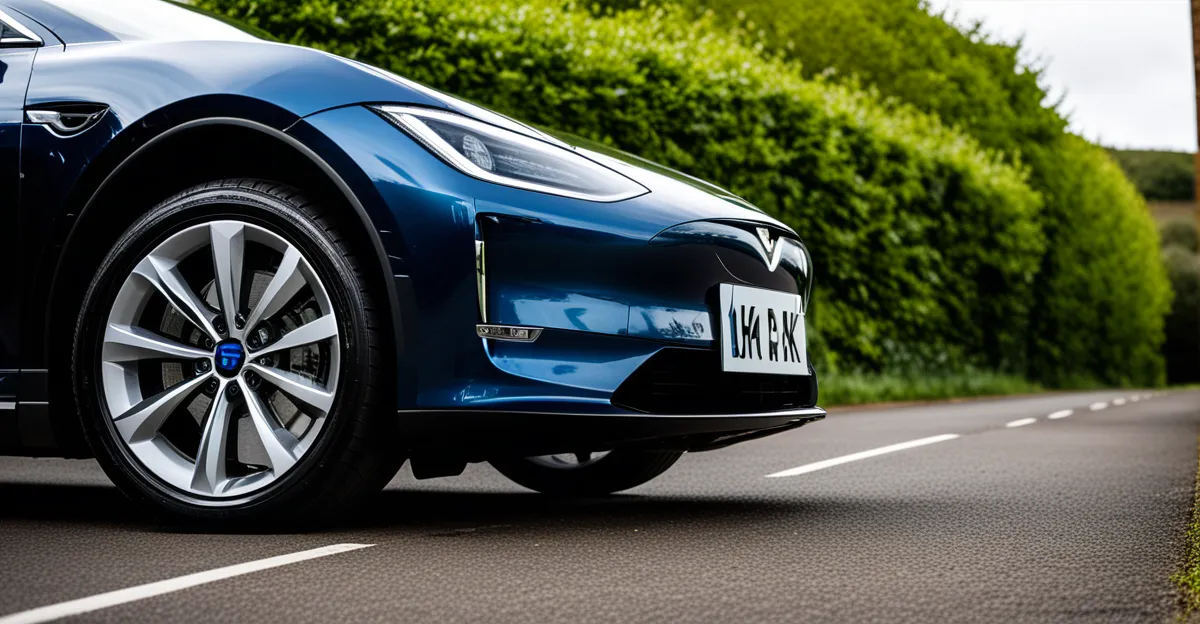Overview of Electric Vehicles in the UK
The electric vehicles UK market has witnessed significant growth, with adoption rates climbing steadily over recent years. This momentum is driven by multiple factors, including increased consumer environmental awareness, advancements in EV technology, and strong government support through incentives and regulations. Electric cars now occupy a growing share of new vehicle sales, reflecting changing buyer preferences toward cleaner, more sustainable transport options.
Key milestones have marked the UK’s EV journey. The government’s ambitious target to phase out petrol and diesel vehicles by 2030 has accelerated industry focus on electric models, pushing manufacturers to expand their EV portfolios. Additionally, improvements in battery efficiency and reductions in purchase costs have made electric vehicles more accessible to the broader public.
In the same genre : How Does the UK Automotive Industry Contribute to Sustainability Goals?
Industry trends highlight a shift toward integrating EV production within traditional automotive hubs in the UK, fostering investment in domestic research and development. Together, these factors combine to accelerate the adoption rates and solidify the UK’s position as a leading market for electric vehicles. Continued growth depends on sustaining this momentum through technological advances and supportive policies.
Policy, Regulation, and Government Initiatives
Government policies play a pivotal role in shaping the EV policy UK landscape. Key government incentives such as grants for new electric vehicles and subsidies on home charging installations have effectively lowered upfront costs, thereby boosting adoption rates. These targeted support schemes provide financial relief for buyers and businesses, making EVs more accessible while also signalling strong public sector commitment.
Additional reading : How is the Rise of Electric Vehicles Shaping the UK Automotive Industry?
Major regulatory shifts include the introduction of low emission zones in urban centres, which restrict the most polluting vehicles and encourage the uptake of cleaner alternatives. The UK’s legally binding zero-emission targets reinforce these measures by setting stringent deadlines for petrol and diesel phase-out by 2030. This regulatory framework creates certainty for manufacturers and consumers alike.
Further, these EV policy UK initiatives address infrastructure needs alongside vehicle incentives, integrating efforts to expand public charging networks. Together, these policies create a comprehensive ecosystem favourable to electric vehicle growth, effectively combining financial, regulatory, and infrastructural tools to accelerate the UK’s transition toward a sustainable transport future. This multi-faceted approach is essential in maintaining rising adoption rates and meeting ambitious environmental goals.
Impact on Traditional UK Automotive Manufacturers
The electric vehicles UK surge is reshaping the automotive industry UK profoundly. Legacy car manufacturers face increasing pressure to pivot from internal combustion engines toward electric drivetrains. This transition demands substantial investment in new technologies, retooling of production lines, and development of EV expertise. Major manufacturers are responding by expanding their electric model ranges and collaborating with battery and software companies to enhance competitiveness.
Adaptation strategies include investing heavily in research and development to improve battery efficiency and vehicle range, essential to meeting rising adoption rates. Some manufacturers strive to localise supply chains, reducing dependency on imports and aligning with stringent EV policy UK regulations. These moves not only help with compliance but also aim to capture growing consumer demand.
Industry case studies illustrate this shift: key British automotive brands have announced ambitious electrification roadmaps, highlighting their commitment to the EV future. These efforts signify a comprehensive industry transformation, marking electrification as central to sustained growth and demonstrating how traditional manufacturers can remain relevant amid evolving industry trends.
Charging Infrastructure and Technological Development
The expansion of EV charging infrastructure in the UK is crucial to supporting rising adoption rates of electric vehicles. Recent government initiatives and private investments have significantly increased the number of public charging points, particularly in urban areas where demand is highest. However, rural regions still face challenges with accessibility, highlighting a disparity in infrastructure UK-wide.
Technological advancements are also driving improvements in EV charging efficiency. Innovations such as faster charging stations and wireless charging options reduce downtime, enhancing convenience for users. For instance, rapid chargers that can replenish an EV battery in under 30 minutes are becoming more common, addressing one of the main concerns among potential buyers.
Infrastructure deployment strategies vary based on location: urban areas benefit from dense networks and integration with public transport hubs, while rural areas require tailored solutions to alleviate range anxiety. Overall, the combination of expanding charging infrastructure and technology advancements supports the growth of the electric vehicle market, making ownership more practical and appealing. These developments are integral to sustaining the UK’s momentum in electric vehicles UK, further encouraging consumer confidence and adoption.
Market Challenges and Barriers to Adoption
Electric vehicles UK face several EV barriers that affect consumer adoption despite rising interest. One common concern is range anxiety—fear of insufficient battery charge on longer trips— which remains a significant obstacle. Although EV charging infrastructure has expanded, gaps persist, especially in rural areas, intensifying these worries. Additionally, higher upfront costs compared to traditional vehicles deter many potential buyers, despite government incentives.
Supply chain constraints also pose industry challenges. The strong demand for critical materials like lithium and cobalt needed for batteries has led to sourcing difficulties and price volatility. These factors slow production scaling and increase EV barriers within the supply chain.
Market readiness varies by region and demographic. While urban areas with dense networks and younger tech-savvy populations show faster consumer adoption, more conservative buyers and less accessible locations face hurdles. Addressing these challenges requires continued advancement in battery technology, affordable pricing models, and infrastructure deployment to make electric vehicles UK attainable and attractive to a broader audience. Only through overcoming these industry challenges can the UK sustain its impressive growth in adoption rates.
Future Outlook and Projections
Looking ahead, the EV market forecast UK predicts continued robust growth, with adoption rates expected to surge dramatically by 2030. Industry trends indicate that as government incentives persist and EV charging infrastructure expands, consumer confidence and demand will further increase. Major projections estimate electric vehicles could comprise a majority of new car sales within the next decade, reshaping the automotive industry UK landscape.
Emerging technologies, such as improved battery chemistries and faster, more convenient charging solutions, will play a key role in driving future projections. These advancements address current EV barriers, making electric vehicles increasingly practical and affordable. Additionally, evolving EV policy UK measures are likely to tighten emissions targets, reinforcing incentives that accelerate transition from internal combustion engines.
The combined impact of supportive regulations, technological innovation, and rising consumer preference hints at a transformed UK automotive sector. As leading manufacturers ramp up electrification efforts, the EV market forecast UK envisions not only growth in adoption but also economic benefits from new job creation and industrial development. Understanding these dynamics is essential to appreciating both the challenges and opportunities in the UK’s electric vehicle future.

